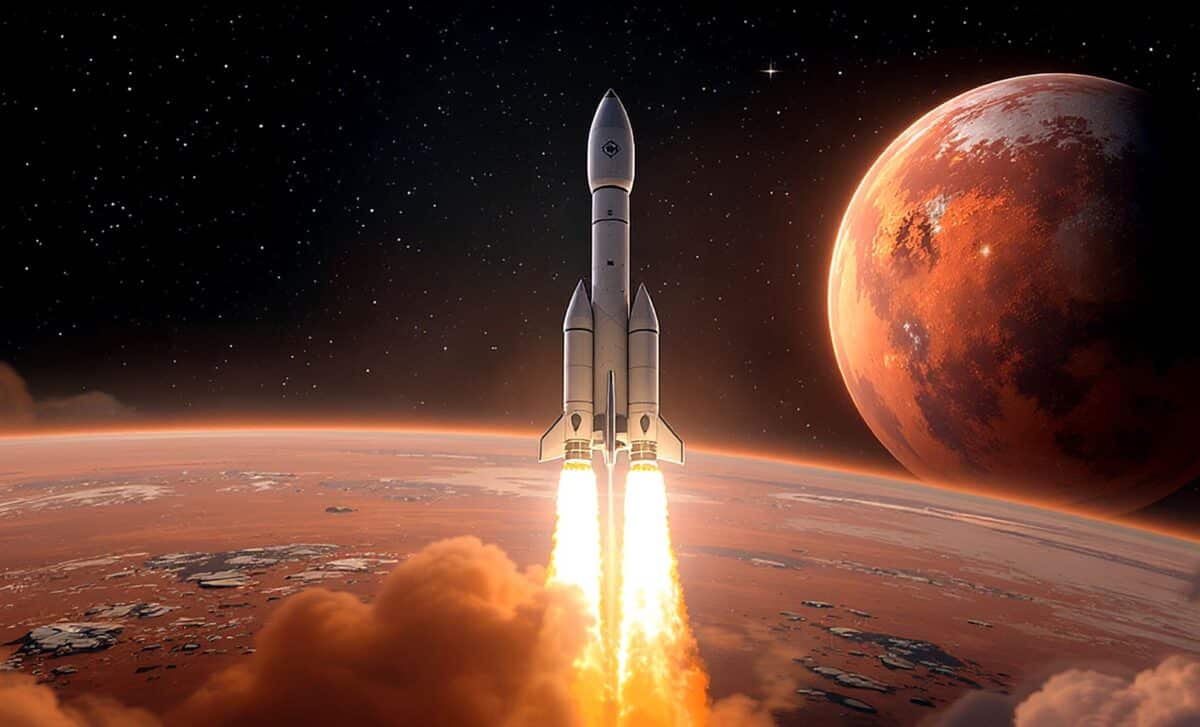NASA has selected four volunteers to live in a 3D-printed habitat for 378 days, simulating life on Mars. The mission, which began on October 19, 2025, is part of NASA’s CHAPEA (Crew Health and Performance Exploration Analog) program. Its goal is to gather crucial data about the impact of long-duration space missions on human health, performance, and endurance.
The crew members will reside in the Mars Dune Alpha habitat at NASA’s Johnson Space Center in Houston. Throughout the mission, they will face resource limitations, communication delays, and simulated spacewalks, providing vital insights into what astronauts might experience during a mission to Mars. According to NASA, these conditions will help researchers plan for the future of human space exploration, focusing on both physical and psychological factors.
This simulation is an essential part of NASA’s effort to prepare for long-term missions beyond Earth, particularly the goal of sending humans to Mars. By replicating the challenges astronauts will face on the Red Planet, NASA aims to design more effective technologies and mission strategies to ensure crew health and performance in deep space.
A Year in Mars Dune Alpha
The Mars Dune Alpha habitat, which spans 1,700 square feet, is a 3D-printed structure designed to closely mimic the conditions astronauts would face on Mars. The volunteers, including Ross Elder, Ellen Ellis, Matthew Montgomery, and James Spicer, will live inside this environment for an entire year. The habitat’s design incorporates features meant to test isolation, resource scarcity, and the emotional and physical toll of living in such a confined, remote setting.
During the mission, the crew will carry out tasks such as growing food, conducting scientific research, and participating in simulated extravehicular activities (spacewalks). They will also face unexpected equipment failures, all while being cut off from direct communication with Earth. According to NASA, these conditions will help evaluate how astronauts cope with delayed communications and resource constraints, two key factors in long-duration missions. This data is expected to help NASA make informed decisions about the technologies and strategies necessary to support human space exploration.
 A glimpse inside the sandbox area of the Crew Health and Performance Analog, where research volunteers engage in simulated Mars surface walks. Credit: NASA
A glimpse inside the sandbox area of the Crew Health and Performance Analog, where research volunteers engage in simulated Mars surface walks. Credit: NASA
Meet the Crew
NASA’s crew for the 2025 CHAPEA mission brings together professionals with diverse backgrounds in aerospace, engineering, and military service. Ross Elder, the mission commander, is an experimental test pilot in the U.S. Air Force with extensive experience in military aviation, including over 1,800 flight hours. He specializes in artificial intelligence, uncrewed systems, and mission systems.
Ellen Ellis, the mission’s medical officer, is a colonel in the U.S. Space Force. With a background in aerospace engineering and emergency management, she brings expertise from her role in the National Reconnaissance Office.
Matthew Montgomery, the science officer, is an engineering consultant who works with technology startups. His experience in robotics and controlled environment agriculture will play a crucial role in the crew’s ability to grow food and maintain systems vital for survival.
James Spicer, the flight engineer, has a background in aerospace and defense. His experience in satellite communications and spacecraft integration makes him a key member of the team.
Alternate crew members Emily Phillips and Laura Marie also bring significant aviation expertise, with backgrounds in military piloting and commercial aviation, respectively.
The Bigger Picture: Why CHAPEA Matters
The CHAPEA mission is not just about testing individual technologies but also about understanding the broader implications of human performance on long-duration missions. NASA’s Human Research Program is focused on researching the effects of spaceflight on the human body, from physical health challenges like muscle atrophy and bone density loss to psychological stress caused by isolation.
As NASA continues to advance its goals with the Artemis program and looks toward the eventual human exploration of Mars, CHAPEA provides critical data on the human factors that could influence mission success.
“CHAPEA and other analog missions help us determine the best ways to support future crews in overcoming the health and performance challenges of living and working beyond Earth,” said Sara Whiting, project scientist at NASA.
The current mission is the second one-year simulation of its kind, following the first, which ended on July 6, 2024. With each iteration, the agency aims to refine its understanding of long-duration spaceflight and ensure that when astronauts eventually reach Mars, they are fully prepared for the journey.

